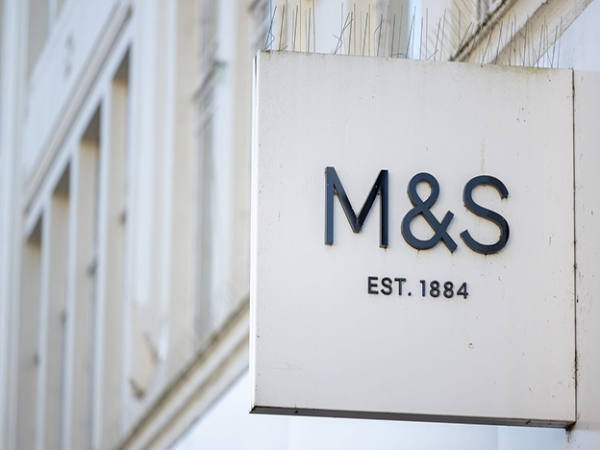Key Points:
- Controlling the supply of money is a key role of central bankers
- The flow of money can impact your investments and personal finance
Central banks use monetary policy to achieve a mandated goal — in the case of the Bank of England, the goal is to achieve an inflation rate of two per cent. They do this by controlling the supply of money in the economy through a variety of measures, most importantly, setting the base interest rate.
Put simply, when central banks lower the interest rate economic activity should be boosted to increase the rate of inflation. That is because low interest rates discourage saving and encourage spending — thus boosting the price of goods and services. The same is true in reverse, if interest rates are high, saving is more attractive than spending and inflation comes down.
But monetary policy has limits — the interest rate can only go so low — and that is why countries have occasionally turned to more unusual monetary policy tools such as quantitative easing. Central banks can print their own money and, during a quantitative easing programme, they use this new money to buy government debt, in the form of bonds. This demand sends the bonds’ value higher, which subsequently decreases their yield (rising prices lead to falling yields and vice versa). And lower bond yields give commercial banks (the type we might use to save money or take out a mortgage) the opportunity to decrease their interest rates, thus increasing spending power and reducing the cost of borrowing for individuals and businesses.
The link between yield and price
Where are we now?
Low interest rates limit the room for monetary policy stimulus in times of crisis. Between 2008 and 2009 the Bank of England cut the base rate from 5.5 per cent to an all-time low of 0.5 percent; since then it has never been higher than 0.75 per cent, leaving little room for further cuts. This has become evident as economies try to respond to the coronavirus shock: economists at the Bank of England estimate that the half-point cut in interest rates will only add 0.3 per cent to UK GDP, nowhere near offsetting the negative impact that Covid-19 has had on the economy. So, to provide further stimulus, the Bank of England has decided to extend its current bond buying scheme by £200bn to £645bn.
How monetary policy impacts your investments
Equities
In the past decade central banks across the world have manipulated bond markets through quantitative easing, cutting yields and pushing up the price of bonds as a result. With little to no return from bond markets or savings accounts, investors have been encouraged to invest in stock markets in search of a decent return on their money.
As Phil Oakley argues here, this all worked well while investors remained confident in the visibility of the future earnings from companies, but that is no longer the case and the coronavirus has caused stock markets to crash back to reality.
So while periods of expansionary monetary policy have, in the past, resulted in stock market rallies, real growth is dependent on a decent outlook for the underlying companies. Without growth in profits, cash flow and dividends, the boosting effect of lower interest rates will rapidly disappear.
For the last few years, long term yields on government bonds have been falling — a sign that investors expect a weakening economy. That hardly creates a bullish backdrop for company profits and growth.
Read more about how to invest in a world of negative interest rates here.
Government Bonds
When interest rates are low, so too are yields on newly-issued bonds. The bonds issued by the government in the wake of the coronavirus sell-off (when interest rates have been cut almost to zero) therefore come with very low yields. Low yields are not attractive to investors and better returns can be found in existing bonds (issued pre-coronavirus), but demand for these bonds has sent the price higher.
Investors hunting for fixed income from government bonds are therefore facing a dilemma. Demand is high, which has sent prices up and the yield has therefore fallen. Investors buying bonds now therefore aren’t getting a good return on their investment. In fact, the yield on short-term government bonds is lower than the current rate of inflation (and therefore negative in terms of real spending power). To read more, see James Norrington’s article on investing in the coronavirus-led market freefall.
Even before the coronavirus, the outlook wasn’t great for bond investors. In January, the US yield curve inverted, which means yields on long-term bonds are lower than those on short-term bonds — a reflection that investors think the outlook for the economy is worsening. Normally, markets price longer-dated bonds more expensively because investors demand greater returns for waiting longer for those bonds to mature. When the curve inverts this signals that investors would rather hold long-term debt because they expect yields to fall (and prices to rise) as the economy slows, inflation drops off and rates are cut.
For more on the inverted yield curve: Rethinking the yield curve inversion by Alex Newman.
Corporate Bonds
Yields on government bonds are important because they are often used as the benchmark against which corporate bonds are priced. As economies react to the coronavirus pandemic, government debt has become very expensive, and this means that yields on high-quality corporate bonds offer a premium for investors.
The real enemy of bond investors is inflation, but in a slowing economy with a stock market in freefall many corporate bonds offer a stable return and guarantee a return of your initial capital investment as long as the issuer remains solvent.
Property markets
Rising real house prices since 2000 are almost entirely explained by low interest rates, or at least so say two Bank of England economists.
The housing market tends to do well when interest rates are low because homeowners and investors can take advantage of low mortgage rates. This can be seen clearly from the US housing bubble in 2006-07 that resulted from the persistently low interest rates of the early 2000s.
The current low-interest rate environment has provided a lot of upside for the housing market, but signals that eventual interest rate hikes could be painful. Economists David Miles and Victoria Monro estimate that a one percentage point rise in real interest rates, if sustained, would eventually cut house prices relative to incomes by almost 20 per cent. Property is an asset just like equities and exposes home owners to significant interest rate risk — as Chris Dillow argues here — even if a property is not mortgaged.
Commodities
The appeal of commodities like gold increases when the income returns from bonds are negative or non-existent, as holding a zero-income-producing asset does not mean you are losing out from potential revenue streams.
The limited supply of gold also makes it attractive when central bankers print money for large-scale asset purchases as it will not be devalued in the same way as cash. Other commodities like silver usually lag the gold price, but have many of the same fundamentals.
Gold helps to protect an investors’ portfolio from recession, or anything that reduces bond yields and share prices, and in this way is a form of insurance, argues Chris Dillow. But this protection comes at a price: if gilt yields rise, gold prices might fall even if commodity prices and inflation expectations rise.
For more information about the economic consequences of the coronavirus, head to our economics landing page which aims answers all your most pressing financial questions.












